

Examples of Results in 2010
Å@In the Summer Sciece Camp 2010, we made three concentrator type, four box type and three panel type solar cookers. I would like to introduce you some interesting results and facts clarified through the analyses. These knowledge are new to me and I enjoyed them a lot. Do not try to mimic the successful ones but try a new improvement. I'm not expecting an old success but new findings by you!
Panel type solar cookers.
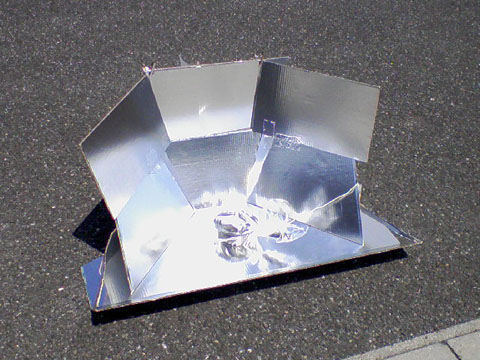
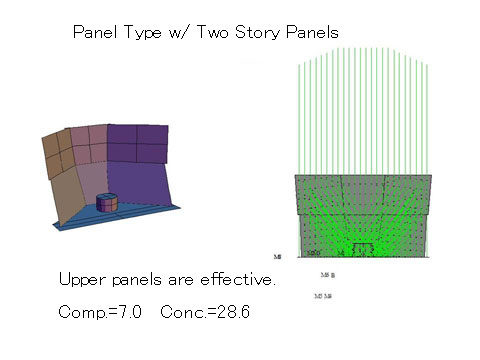
It looks like two-story SolarCooKit. The analysis shows the upper panels are effective but too large for the pot of this size.
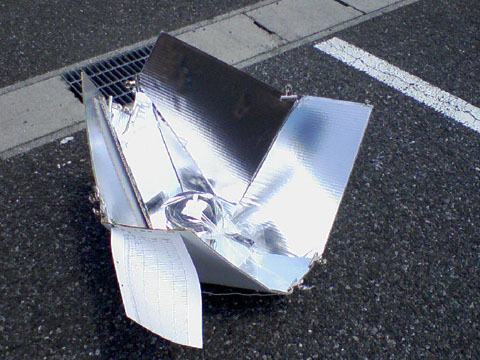
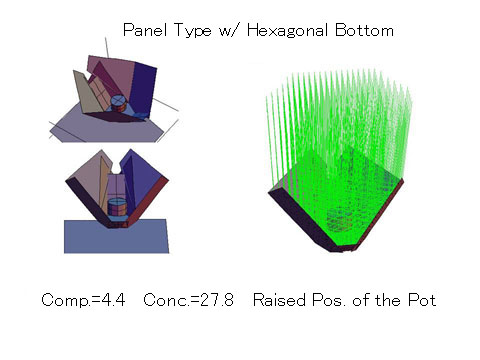
Looks very complicated but if you see the expansion plan of this cooker, it is just a square sheet with many cuts. The shape ofthe bottom is hexagonal. Although its analysis show relatively modest performance, the real cooker performed fairly good. Through an experimental analyses using the laser matrix light source, they raised the position of the pot slightly. This also contributed to suppress the heat loss by conduction.Å@
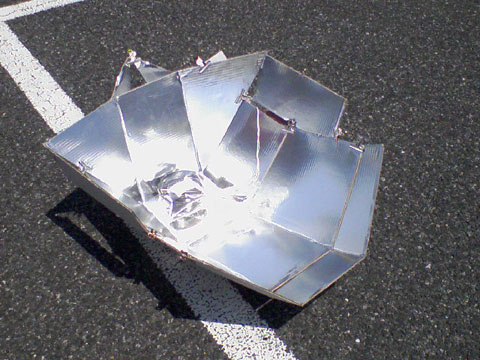
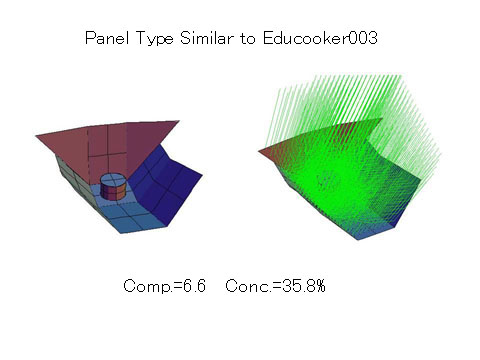
The students employed the ideas from Educooker002 and 003. The front shape is similar to Educooker003, and the rear portion, Educooker002. It is a little to long and the front portion does not contribute to the increase of concentration for the sun elevation of this season.
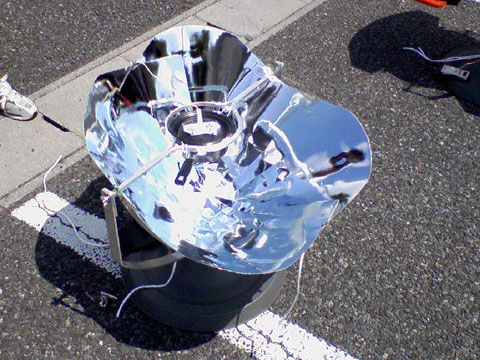
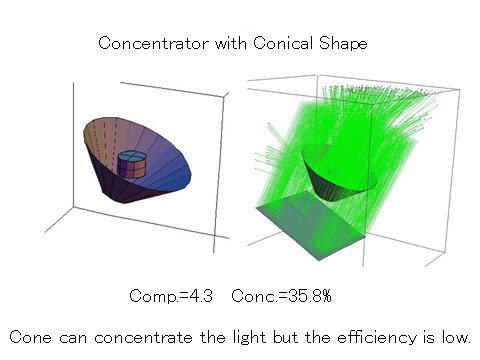
They tried to increase the radial cutting of Educooker004 to make the surface much smoother. According to the analysis it can make the concentration to more than 90%. In their case, unfortunately, by misarrangement of the overlapping potions, the shape became very much like conical one. A conical reflector can concentrate the sunlight sharply along the central axis, heating a pot with this shape of reflector seems inefficient.
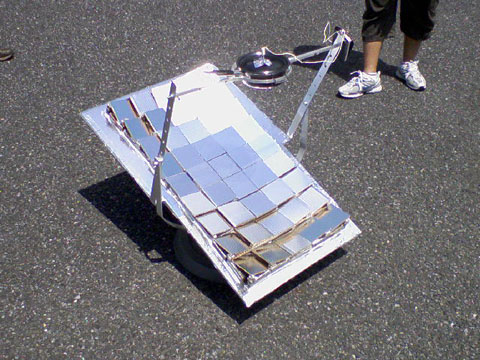
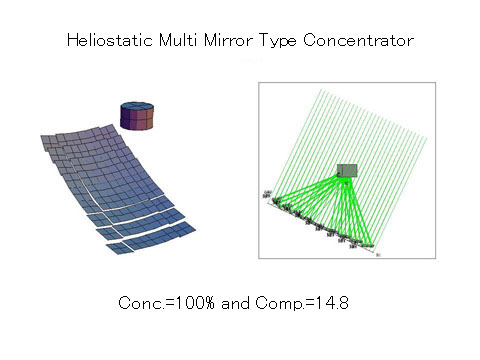
This is a heliostatical multimirror concentrator. They employed a simplified method to arrange the mirrors with proper inclinations. By offsetting the height of the parabola, the inclination of the successive segments of mirrors increase in integral multiplications. This method is only effective for the parabola with long focal length.
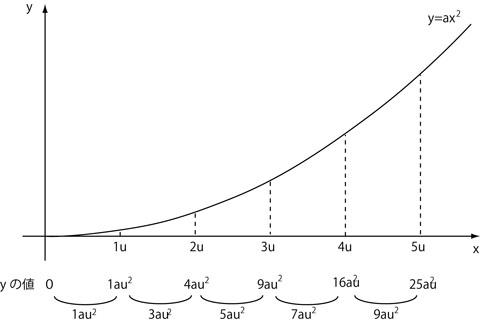
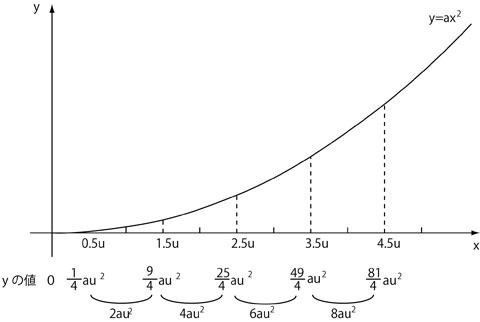
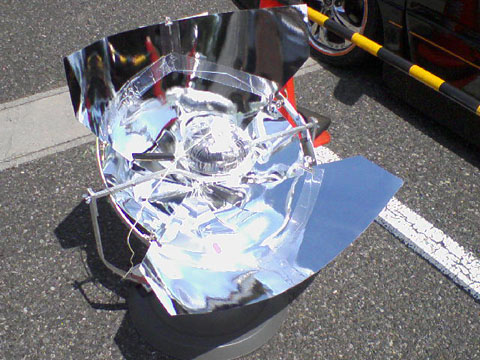
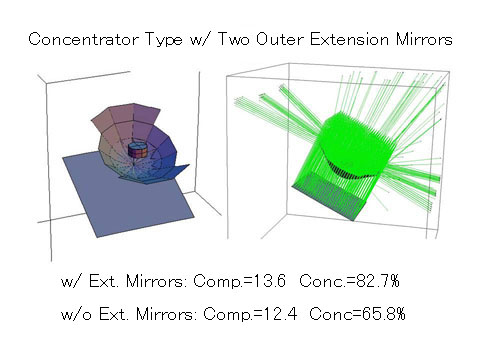
This is also an expanded version of the Educooker004. They added the outer extensions but because they did not adjust the angles properly and just extended the reflector with the same inclinations, the two outer reflectors did not effetively increase the light hitting on the pot. That is the reason the compression is slightly improved but the concentration dropped largely by adding the mirrors.
|